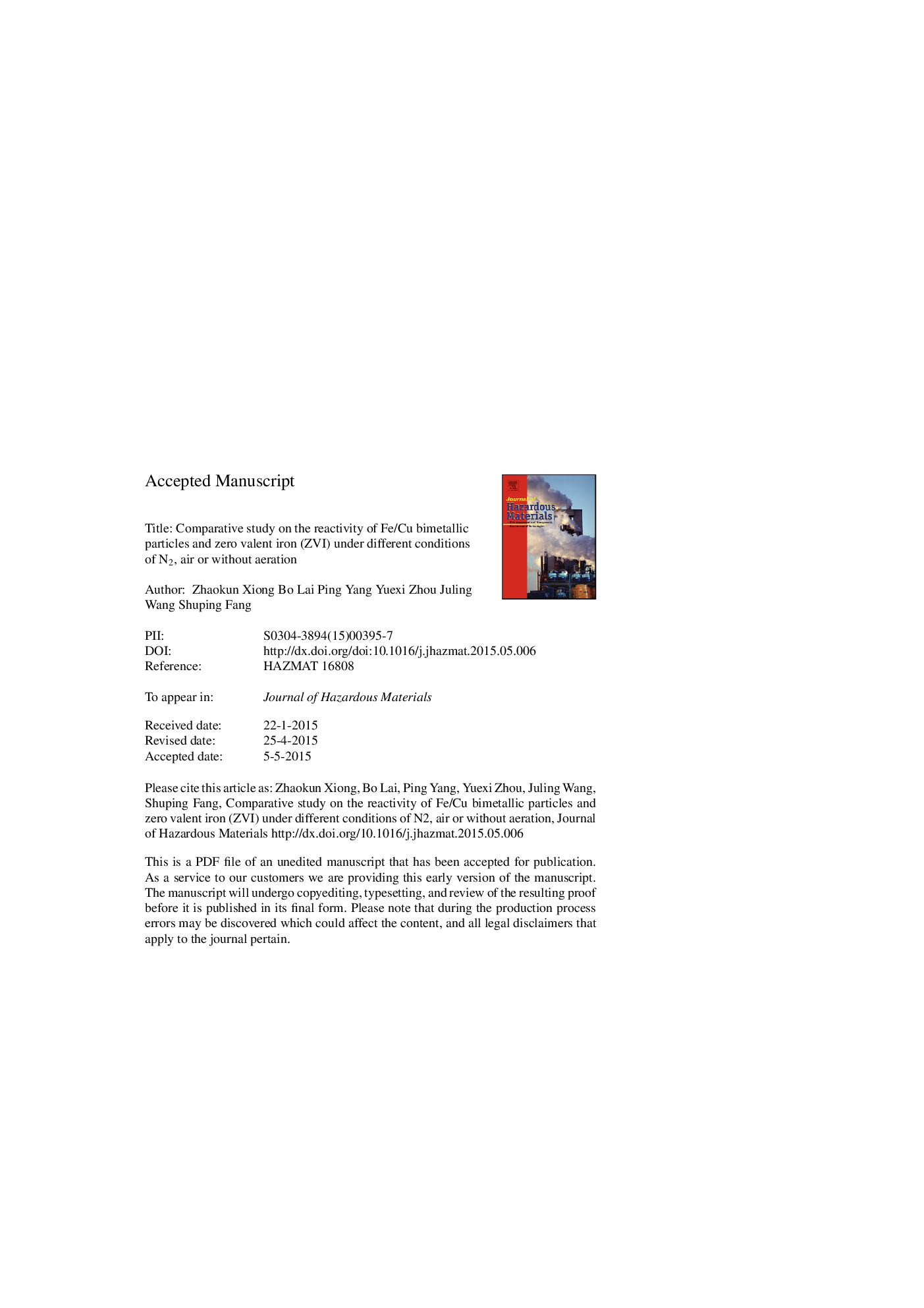| Article ID | Journal | Published Year | Pages | File Type |
|---|---|---|---|---|
| 6970965 | Journal of Hazardous Materials | 2015 | 28 Pages |
Abstract
In order to further compare the degradation capacity of Fe0 and Fe/Cu bimetallic system under different aeration conditions, the mineralization of PNP under different aeration conditions has been investigated thoroughly. The results show that the removal of PNP by Fe0 or Fe/Cu system followed the pseudo-first-order reaction kinetics. Under the optimal conditions, the COD removal efficiencies obtained through Fe0 or Fe/Cu system under different aeration conditions followed the trend that Fe/Cu (air)Â >Â Fe/Cu (N2: 0-30Â min, air: 30-120Â min)Â >Â control-Fe (air)Â >Â Fe/Cu (without aeration)Â >Â Fe/Cu (N2)Â >Â control-Fe (N2). It revealed that dissolved oxygen (DO) could improve the mineralization of PNP, and Cu could enhance the reactivity of Fe0. In addition, the degradation of PNP was further analyzed by using UV-vis, FTIR and GC/MS, and the results suggest that Fe/Cu bimetallic system with air aeration could completely break the benzene ring and NO2 structure of PNP and could generate the nontoxic and biodegradable intermediate products. Meanwhile, most of these intermediate products were further mineralized into CO2 and H2O, which brought about a high COD removal efficiency (83.8%). Therefore, Fe/Cu bimetallic system with air aeration would be a promising process for toxic refractory industry wastewater.
Related Topics
Physical Sciences and Engineering
Chemical Engineering
Chemical Health and Safety
Authors
Zhaokun Xiong, Bo Lai, Ping Yang, Yuexi Zhou, Juling Wang, Shuping Fang,
